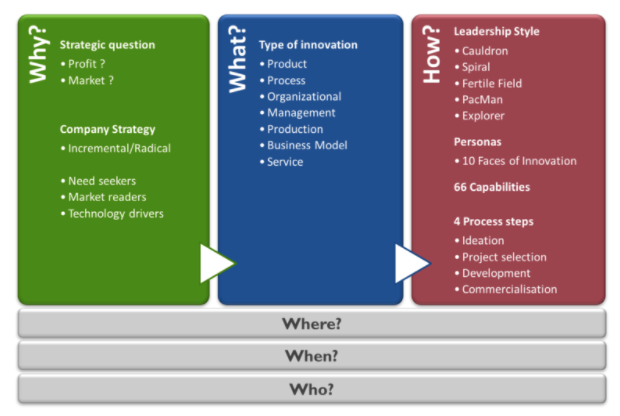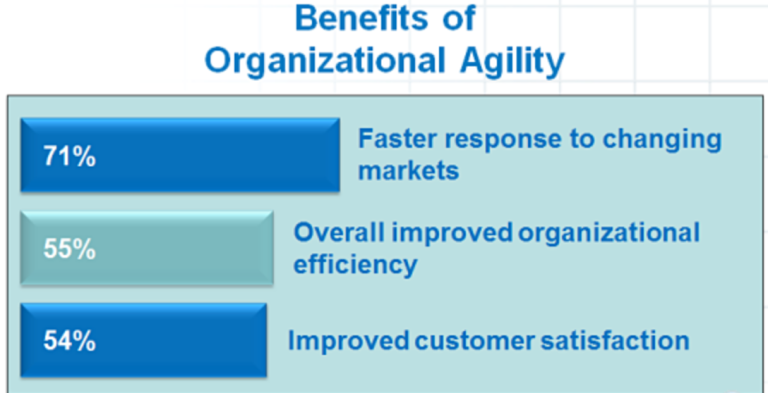Problem Statement
The nature of work is changing from what was largely an assembly-line of individual contributions to work that is significantly aided by the contributions of a group. These groups need to be able to form and disband again and again to address issues, solve problems, and innovate, as these various needs present themselves. And often, these groups need to include a variety of disciplines, dispersed across multiple physical locations. The human resources of an organization need to be just as adaptable and agile as the technologies hitting the market today.
This change in the nature of work has significant implications as facilities managers design workplaces. A room full of cubicles doesn’t incite group work. Dedicated rooms reserved for one person or one department don’t support these agile, innovative teams. Facilities managers have the power to throw gas on the spark of innovation by providing employees workspaces and office experiences that instigate this new way of working. (Adams, 2015)
Challenges & Opportunities
Change is the new normal: no industry is standing still these days, and this means that the innovation challenges we face are also constantly changing. A worrying sign from our small sample is that many companies are still in too reactive mode to these innovation challenges, and are not doing enough to push smartly into new areas and lay the seeds for growth when the recession finally clears. They would do well to take a step back from the rush of day-to-day operations and consider a strategy for the next one-to-two years that does not assume commoditization, simplified offerings, and risk-aversion will continue to be the basis for competitiveness. What will be the next set of competitive dimensions? If you’re not asking these questions now, you will be yet further behind when the economy really comes back to life.
Two factors are conspiring to heighten concerns over rapid commoditization: price pressures from still budget-conscious customers, and market compression from more competitors (and more cut-throat competitors). These equate to a race to the bottom on price, and an inability to differentiate except on price. It’s a death spiral. Unsurprisingly, given the state of the economy, commoditization was even more pronounced in the students’ responses than 12 months ago, and few of them were yet seeing the end of the spiral.
Previously, the focus was on how customers were becoming more demanding. However, recently the trend has shifted subtly: customers now are seeking simplicity. This means bundled solutions where you provide an end-to-end package, especially for B2B companies. Customers are willing to be offered fewer options if they can get a lower price. For companies who are used to working in high-touch, high-segmentation, high customization modes (very common until two-to-three years ago), this can be a difficult shift. One also has to be wary of demands shifting again, when the buying mentality changes back to buying best-of-breed from multiple vendors.
Requests for “simplicity” can also be a signal that customers see your offering as generic, which means they could start treating you as a commodity permanently, and not just temporarily while the economy is bad. Treat this as a warning that your offering may not be as unique and valuable as you think it is.(Richardson, 2011)
Business Solution
Despite massive investments of management time and money, innovation remains a frustrating pursuit in many companies. Innovation initiatives frequently fail, and successful innovators have a hard time sustaining their performance—as Polaroid, Nokia, Sun Microsystems, Yahoo, Hewlett-Packard, and countless others have found.
Why is it so hard to build and maintain the capacity to innovate? The reasons go much deeper than the commonly cited cause: a failure to execute. The problem with innovation improvement efforts is rooted in the lack of an innovation strategy.
A strategy is nothing more than a commitment to a set of coherent, mutually reinforcing policies or behaviors aimed at achieving a specific competitive goal. Good strategies promote alignment among diverse groups within an organization, clarify objectives and priorities, and help focus efforts around them. Companies regularly define their overall business strategy (their scope and positioning) and specify how various functions—such as marketing, operations, finance, and R&D—will support it. However, companies rarely articulate strategies to align their innovation efforts with their business strategies.
Without an innovation strategy, innovation improvement efforts can easily become a grab bag of much-touted best practices: dividing R&D into decentralized autonomous teams, spawning internal entrepreneurial ventures, setting up corporate venture-capital arms, pursuing external alliances, embracing open innovation and crowdsourcing, collaborating with customers, and implementing rapid prototyping, to name just a few. There is nothing wrong with any of those practices per se. The problem is that an organization’s capacity for innovation stems from an innovation system: a coherent set of interdependent processes and structures that dictates how the company searches for novel problems and solutions, synthesizes ideas into a business concept and product designs, and selects which projects get funded. Individual best practices involve trade-offs. And adopting a specific practice generally requires a host of complementary changes to the rest of the organization’s innovation system. A company without an innovation strategy won’t be able to make trade-off decisions and choose all the elements of the innovation system.
There is no solution that fits all companies equally well or works under all circumstances. There is nothing wrong, of course, with learning from others, but it is a mistake to believe that what works for, say, Apple (today’s favorite innovator) is going to work for another organization. An explicit innovation strategy helps you design a system to match your specific competitive needs.
Finally, without an innovation strategy, different parts of an organization can easily wind up pursuing conflicting priorities—even if there’s a clear business strategy. Sales representatives hear daily about the pressing needs of the biggest customers. Marketing may see opportunities to leverage the brand through complementary products or to expand market share through new distribution channels. Business unit heads are focused on their target markets and their particular P&L pressures. R&D scientists and engineers tend to see opportunities in new technologies. Diverse perspectives are critical to successful innovation. However, without a strategy to integrate and align those perspectives around common priorities, the power of diversity is blunted or, worse, becomes self-defeating.
To be an agile and innovative organization, employees need to be able to quickly form groups, effectively collaborate, then quickly disband to create the components required to bring their concepts to life. In this new work environment, employees need more than a binary choice of home versus cubicle. Susan Cain puts it beautifully when she says:
“We need to create settings in which people are free to circulate in a shifting kaleidoscope of interactions, and to disappear into their private workspaces when they want to focus or simply be alone.”
While the term “Third Space” was once used to describe where we do work when we are not at home or in the office (e.g. your local coffee shop), as organizations have come to understand the power of these workspaces for their employees, the term has evolved to mean a refuge created by the company itself.
What a Third Space would look like for your company is driven largely by your corporate culture. Not every organization is going to have the resources of the tech giants in Silicon Valley. But there are a few elements that all Third Spaces have in common:
They are accessible, both physically and financially. Some organizations make the Third Space the center of their floorplan, around which all other workspaces extend. While others create satellite Third Spaces to reach remote employees. Making them convenient and not cost-prohibitive to get to or use will help ensure they are used when needed.
They promote collaboration. One of the reasons these spaces work so well is that the best way to collaborate is visually – 55% of communication is non-verbal. High-speed Wi-Fi, monitors that make content visible to all, and large whiteboards facilitate in-room problem-solving and innovation. To extend the value of the Third Space well beyond its physical walls, high quality voice, video and content sharing makes it possible to bring colleagues in other locations into the conversation.
They create a welcoming environment that engenders trusting relationships. In Simon Sinek’s TED talk, he shares that trust comes from feeling safe. This is why so many Third Spaces look like coffee shops and living rooms. When groups feel safe and relaxed, it garners the trust needed to take risks, speak up, and be innovative.
Third Spaces aren’t just for giants like Google or startups like Square. Their pervasiveness is illustrated in a recent Huffington Post article that reported the growth of Third Spaces in design and architecture firm proposals. One architectural firm went so far as to say they include it in every proposal. “‘It doesn’t always get approved, but we’re finding that even traditional firms ask us to do more than we expected,’ MKDA president Michael Kleinberg told The Huffington Post, adding that his clients tend to excuse the cost as a basic investment in productivity.”
Facilities leaders have the unique opportunity to think beyond the traditional cubicle and meeting room to create Third Spaces in the company’s workplaces that fuel agility, innovation and a competitive advantage. And incorporating visual collaboration technology into these spaces increases their impact exponentially. (Adams, 2015)

Figure 1.1. Facilities inspiring innovation. Source: (Adams, 2015)
Aligning strategy, leadership style, culture, capabilities and competences is the key to success in building an innovative and sustainable business in today’s ever changing market context. Figure 1.2 shows Innovation360´s framework of innovation and how the different concepts are interlinked. Beside what’s shown in Figure 1.2, competences are crucial, but the capacity to learn is what really counts.

Figure 1.2. The Innovation 360 Group´s framework for innovation management. (Penker, 2011).
Business agility is the crucial element of staying innovative and surviving the competition.

Figure 1.3 Benefits of organizational agility. Source: Ausgabe 2/2013
The below image presents some interesting ideas on how to achieve business agility. The main point is that business agility can be achieved through improving market presence by focusing on quality and efficiency.

Figure 1.5 Achieve Business Agility. Source: Pinterest
Lessons Learned/Business Case
Every individual, sports team, organizational division and company faces the same challenge: innovation. Specifically, to navigate the industry “wins” and leave behind the institutional knowledge that once defined their organization’s culture and instead reach for new ways of thinking and doing that sustains relevance. They do this not because culture change is fun but rather for the purpose, vision and values that define them. The innovation sparked by the above disruptive industry thinkers bears fruit to three common denominators they all have in common; three means by which successful companies go about innovation and disruption that are inextricably linked: people, process, and purpose.
Attracting and retaining the right people is a process in itself, and processes are typically governed by the behaviors and organizational structure that, in turn, creates a positive or negative culture as defined by the purpose for which it espouses. The difference between ordinary and extra-ordinary companies is reflected partly by the characteristics of the processes and performance metrics of the people therein, but not as much as the vision and values—purpose—set forth by their leaders to which the employees execute said processes.
Character is who you are; competence is what you can do. Values like trust, integrity, authenticity and humility are qualities that define who you are as a person and why people either value or avoid you. People solve problems, not process. Processes do just that—they process.
Last year the world saw major advancements in innovation with companies like Tesla, Uber, and Airbnb disrupting the marketplace and how people and companies go about doing business. The question, of course, is “How did they do it?”
The innovation sparked by the above disruptive industry thinkers bears fruit to three common denominators they all have in common; three means by which successful companies go about innovation and disruption that are inextricably linked: people, process, and purpose.
Attracting and retaining the right people is a process in itself, and processes are typically governed by the behaviors and organizational structure that, in turn, creates a positive or negative culture as defined by the purpose for which it espouses. The difference between ordinary and extra-ordinary companies is reflected partly by the characteristics of the processes and performance metrics of the people therein, but not as much as the vision and values—purpose—set forth by their leaders to which the employees execute said processes.
Character is who you are; competence is what you can do. Values like trust, integrity, authenticity and humility are qualities that define who you are as a person and why people either value or avoid you. People are obviously integral to an organization, but it’s not an individual’s character or competence that serves as the true value he or she brings. Where the real moneymaker lies is in how he or she works with others, applies and shares that knowledge and experience to further the organization’s mission that makes a company great.
Character defines who you are, the culture you’re a part of, and what you—and therefore your company—stand for. They are the specific values that govern one’s attitudes, behaviors, and beliefs. Your company’s ethos will either retain or dissuade the interest of applicants and employees based on the ideals and reputation the business holds.
Clayton Christensen in her book laid out the recipe for innovation in business as five key skills: associating, questioning, observing, networking, and experimenting.

Figure 1.4 Five skills from The Innovator’s DNA. (Christensen, 1997)
Associating: drawing links between unrelated ideas or disciplines. Author Frans Johanssen described this phenomenon as “the Medici effect.”. The Medici family funded sculptors, scientists, poets, painters, and architects in 15th century Florence. When these individuals influenced each other’s work, groundbreaking ideas were born. The result was the Renaissance – one of the most innovative eras the world has seen. Innovative thinkers are naturally able to connect ideas that others find unrelated.
Questioning: Challenging ideas, thoughts, opinions makes for a stronger outcome. Not just ‘Is there a need for this?’ of ‘will it work?’ but ‘what if we try it that way or this?’
Observing: absorbing information through observation is as important as forcing information through questioning. Observe the competition, watch people from different departments, see problem solving in everyday activities like commuting or food shopping. Referencing across industries, as the next skill promotes, comes from being able to see success being achieved by others and recognise its value
Networking: This is not meeting people in your field who can be of professional use to you, it is much broader in scope and carries far more potential. Meet people from different professions, backgrounds, different audiences to yoru product or service and you will stand the best chance of getting a well-rounded view of what you are offering and how it is seen by others. Insights offered in this type of networking could take you in an entirely new direction than your focus groups and board meetings.
Experimenting: Our interview with Makeshift co-founder Stef Lewandowski says as much – experimenting, hacking, iteration gives you the chance to test things before committing to them or scrapping them out of hand. Consuming a variety of authors, filmmakers, exhibitions, cultures, personalities, colours and places can only improve your own offering by giving you’re a deeper pool of experiences to draw from.
The latter four ideas feed the first, helping those who are not naturally inclined to association learn to connect problems and merge fields for an innovative outcome.
Why I Care
In order to able to compete today, tomorrow and the day after, it is not enough to do one-off organizational work. The company should realize the need to have the right organization and management in place to drive innovation in several horizons. At the heart of innovation lies a fundamental understanding of its nature, which is to challenge the status quo by making things that are better and totally different using existing elements (resources, capabilities and competences) in new ways. The reason for innovating can be to follow the market, satisfy needs not satisfied at the moment as well as using technology to make something possible that was not possible before. Innovation can be done in small steps (incremental) or in leaps (radical). However, regardless of the way it is being done, innovation is crucial for survival of the company. Without valuing innovation and caring about it, sooner or later a day will come that another company will get better at what your organization does and then it could be to late to catch up. Innovation is the future, or better put there is no future without innovation.
References
http://www.hrzone.com/hr-glossary/what-is-business-agility
Adams, S (2015) Third Spaces Drive Business Agility and Innovation. Retrieved from:
http://theworkspacetoday.com/2015/08/07/third-spaces-drive-business-agility-and-innovation/
Fitzsimmons, J. A., Fitzsimmons, M. J., & Bordoloi, S. (2014).
Service Management: Operations, Strategy, Information Technology, 8th Edition.
New York, NY: McGraw-Hill/Irwin.
Richardson, A (2011) Staying Ahead of Innovation Challenges. Retrieved from:
https://hbr.org/2011/03/staying-ahead-of-c
Pisano, G (2015) You Need an Innovation Strategy. Retrieved from:
https://hbr.org/2015/06/you-need-an-innovation-strategy
Boss, J (2015). 3 Ways Great Companies Maximize Their Innovation And Stay Relevant. Retrieved from:
PENKER, M (2016) The Wheel of Innovation: Lessons learned from >1,000 companies and 62 countries. Retrieved from:
http://innovation360group.com/wheel-innovation-lessons-1000-companies-continents/
Christensen, C. Five Behaviors of a Successful Innovator. Retrieved from:
